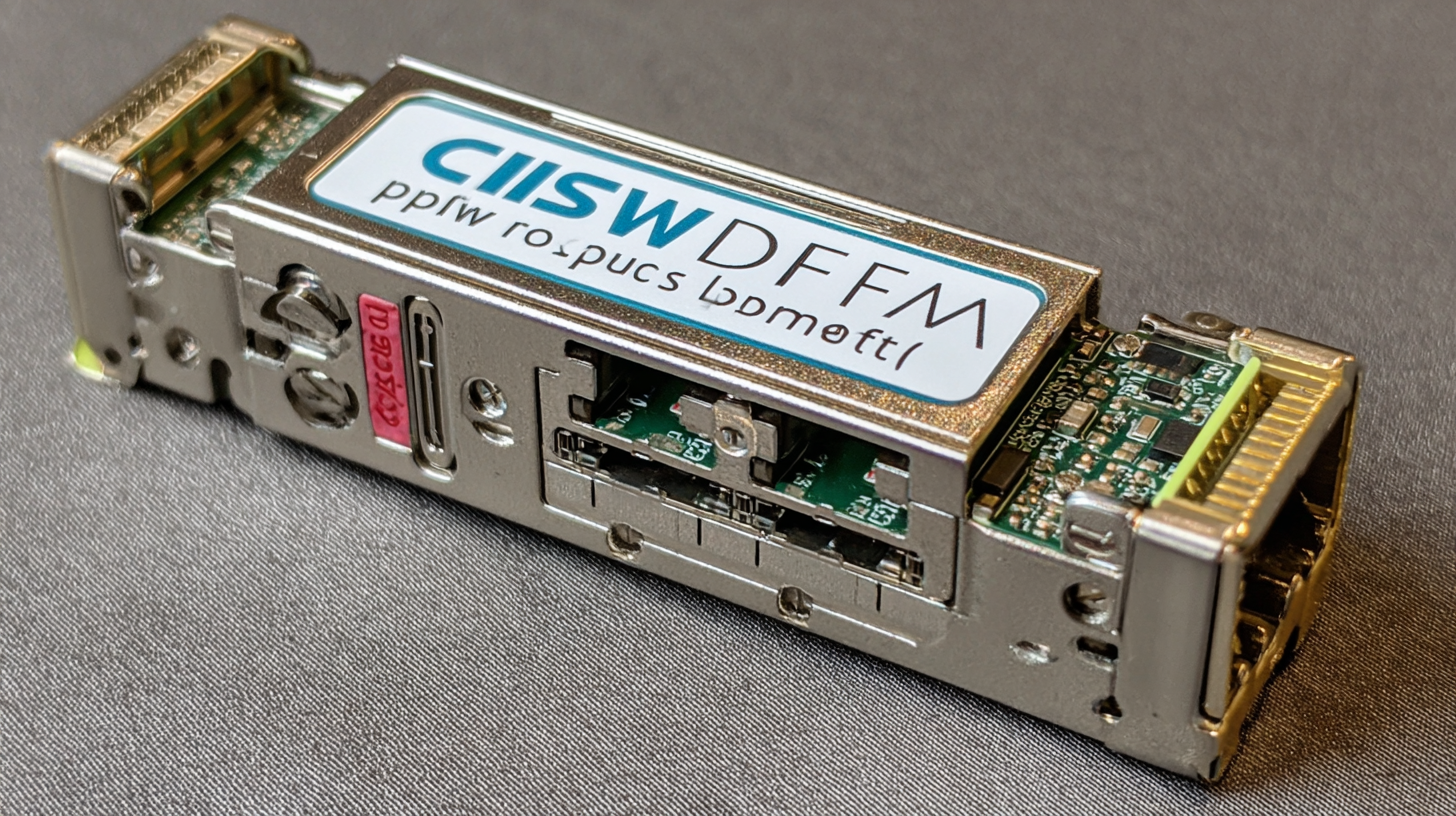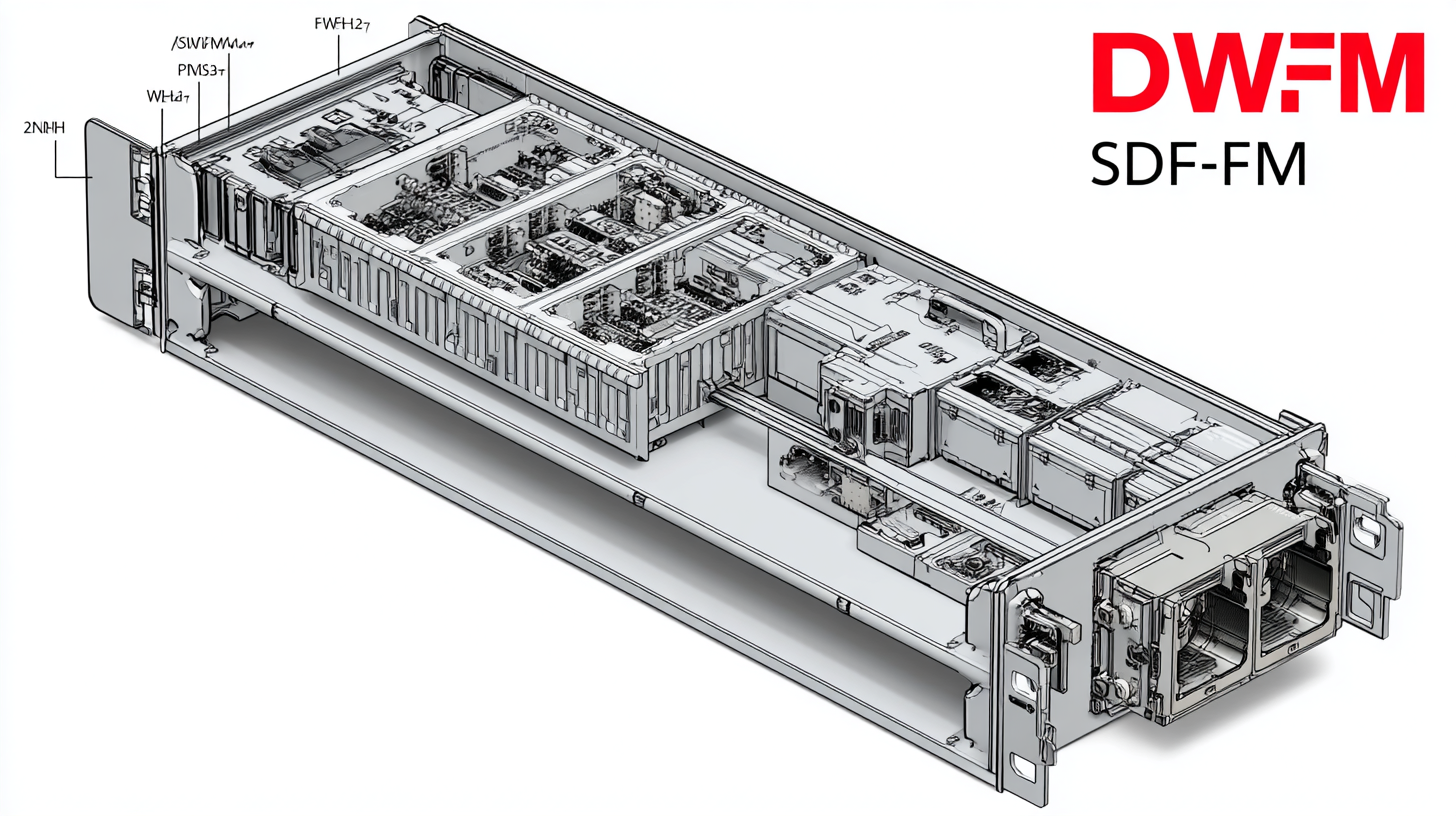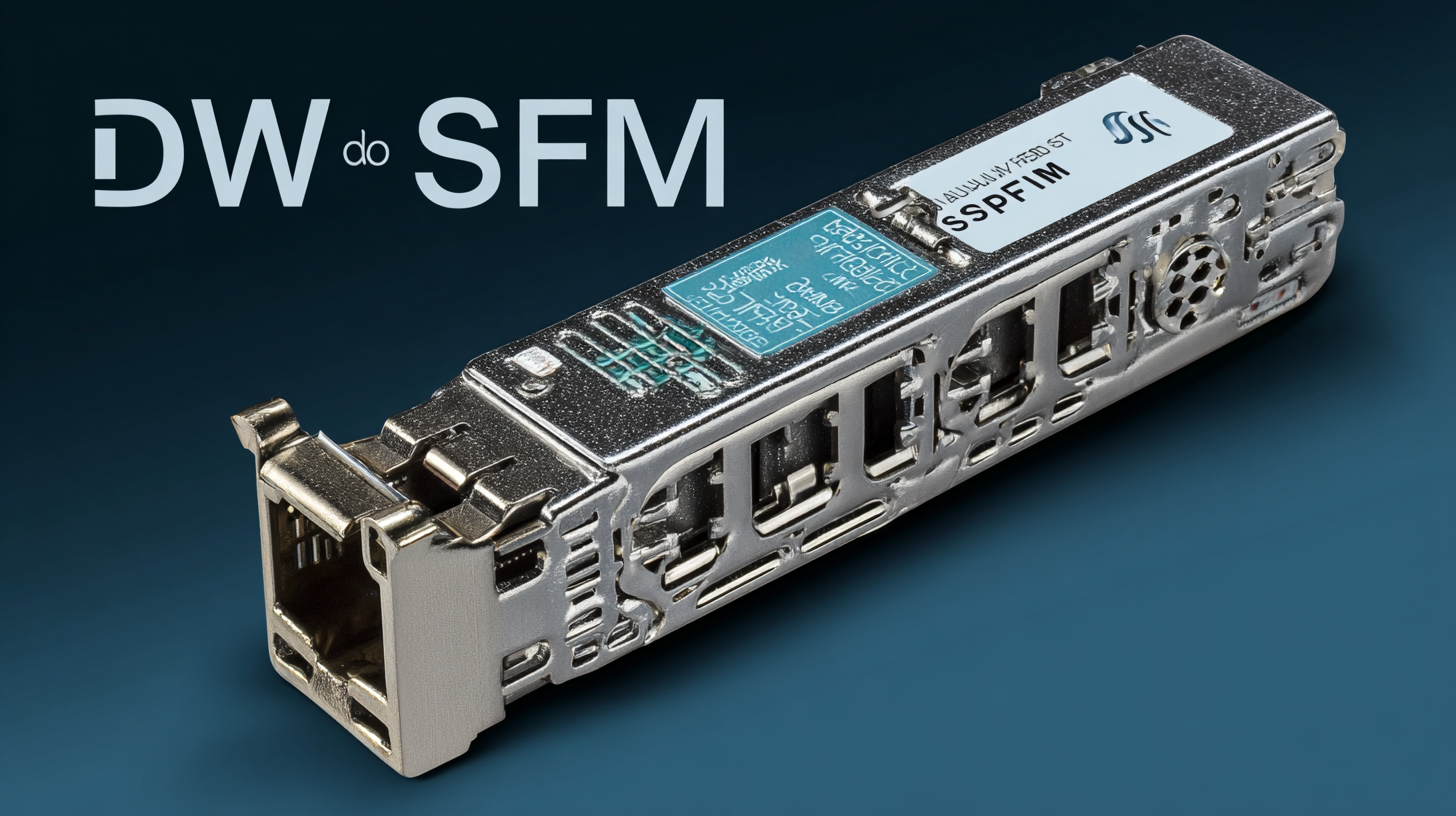Leave Your Message
In today’s fast-paced digital landscape, the demand for high-speed, reliable data transmission is at an all-time high. According to a recent report by MarketsandMarkets, the optical transceiver market is projected to grow from $5.4 billion in 2020 to $9.7 billion by 2025, driven largely by the increasing implementation of Dense Wavelength Division Multiplexing (DWDM) technologies. Among these, Cisco DWDM SFP+ modules stand out as a critical component for maximizing network performance.

These compact, high-capacity modules are essential for enabling faster data rates and improving bandwidth efficiency in modern optical networks. However, choosing the right Cisco DWDM SFP+ modules can be challenging, as factors such as compatibility, range, and performance characteristics must be carefully considered. This guide will explore common issues and solutions related to Cisco DWDM SFP+ modules, helping you make informed decisions to optimize your network infrastructure.
Dense Wavelength Division Multiplexing (DWDM) is a fiber-optic technology that enables multiple data streams to be transmitted simultaneously over the same optical fiber by using different wavelengths (or channels) of laser light. This technology has revolutionized data transmission efficiency, with industry reports indicating that DWDM can increase the capacity of existing fiber infrastructure to over 100 Gbps per channel. According to the market research firm Research and Markets, the global DWDM market is expected to reach $20.39 billion by 2026, reflecting a compound annual growth rate (CAGR) of 12.5% from 2021.
One of the key advantages of DWDM technology is its ability to optimize bandwidth usage, allowing network operators to maximize the transmission potential of their fiber networks without the need for additional physical cables. A study from LightCounting Market Research suggests that deploying DWDM systems can lead to up to 60% reduction in overall transmission costs. Additionally, by employing SFP+ modules designed for DWDM, organizations can enjoy greater flexibility and scalability, enabling them to adapt to increasing data demands swiftly. As data traffic continues to surge, adopting DWDM technology is more critical than ever to ensure robust and efficient network performance.

When selecting Cisco DWDM SFP+ modules, compatibility and performance stand out as critical factors. Compatibility involves ensuring that the chosen modules align seamlessly with existing networking equipment. According to a recent report from Dell’Oro Group, compatibility issues can account for up to 30% of network downtime, underscoring the importance of selecting modules certified by Cisco. Leveraging SFP+ modules engineered for compatibility can enhance network reliability and minimize operational disruptions.
Performance, on the other hand, focuses on factors such as transmission distance and data rate. Research from IHS Markit highlights that high-performing DWDM SFP+ modules can support data rates of up to 100 Gbps over significant distances exceeding 80 kilometers without signal degradation. This capability is essential for organizations seeking to expand their network without incurring the costs associated with additional infrastructure. By prioritizing both compatibility and performance, businesses can ensure their network is not only robust but also future-proof, paving the way for higher bandwidth requirements in the years to come.

As the demand for high-capacity and efficient data transmission continues to rise, the global market for
Dense Wavelength Division Multiplexing (DWDM) SFP+ modules is experiencing significant growth.
Manufacturers are increasingly investing in advanced technologies to ensure their products meet the stringent performance requirements of modern networks.
With burgeoning exports to various regions, companies are not only enhancing product availability but also focusing on reducing costs through streamlined production processes.
Tip: When selecting a DWDM SFP+ module, always consider compatibility with your existing infrastructure.
Ensuring that the module aligns with your current transceiver standards can drastically improve network performance.
Moreover, emerging trends highlight the importance of sustainability in the manufacturing process.
Many producers are adopting eco-friendly practices and materials, which not only helps the environment but also appeals to a more environmentally conscious market.
By staying ahead of these trends, businesses can position themselves favorably in an increasingly competitive landscape.
Tip: Keep an eye on certifications and compliance standards.
Modules that meet international standards are more likely to offer reliability and longevity, making them a worthwhile investment for your network.
When evaluating Cisco's DWDM SFP+ modules, two critical specifications come to the forefront: power budget and distance metrics. These factors significantly influence network performance, especially when handling high-capacity data transmission over long distances. Notably, advancements in DWDM technology have led to the development of systems capable of surpassing 5000 km of transmission without the need for electrical regeneration, achieving impressive system capacities.
Tip: Always consider the power budget of the module in relation to the total link loss, including fiber loss and connector losses. This ensures that the selected SFP+ module can operate effectively across the intended distance.
Furthermore, understanding the distance metrics associated with Cisco's DWDM SFP+ modules can help in optimizing network design. For instance, new tunable DWDM transceivers are now available for extended reach on all SFP+ ports, enabling greater flexibility in deployment.
Tip: Utilize the latest advancements in optical technology, such as tunable modules, to adapt to varying network demands. This flexibility can greatly enhance performance while accommodating future scalability needs.
In today's rapidly evolving digital landscape, selecting the right DWDM SFP+ modules is critical for maximizing network performance. With the deployment of advanced solutions like multiplexers, businesses can significantly enhance their data throughput and reliability. Recent advancements in optical networking technologies, such as the introduction of cutting-edge multiplexing systems, illustrate a growing trend toward high-capacity networks designed to manage 400G DWDM systems efficiently. These innovations not only improve bandwidth utilization but also ensure that network operators can seamlessly handle increasing data demands.
Furthermore, best practices for implementing Cisco DWDM solutions emphasize the importance of integrating reconfigurable optical add-drop multiplexers in system design. This flexibility allows for dynamic management of bandwidth, enabling operators to allocate resources based on real-time needs. As telecom operators continue to upgrade their infrastructures, leveraging robust DWDM modules alongside cutting-edge technologies becomes essential. Deploying such solutions equips organizations with the agility to adapt to future requirements while maintaining optimal network performance and quality of service.
This chart illustrates key performance metrics of various DWDM SFP+ modules, including latency and throughput, helping you make informed choices for optimal network performance.
